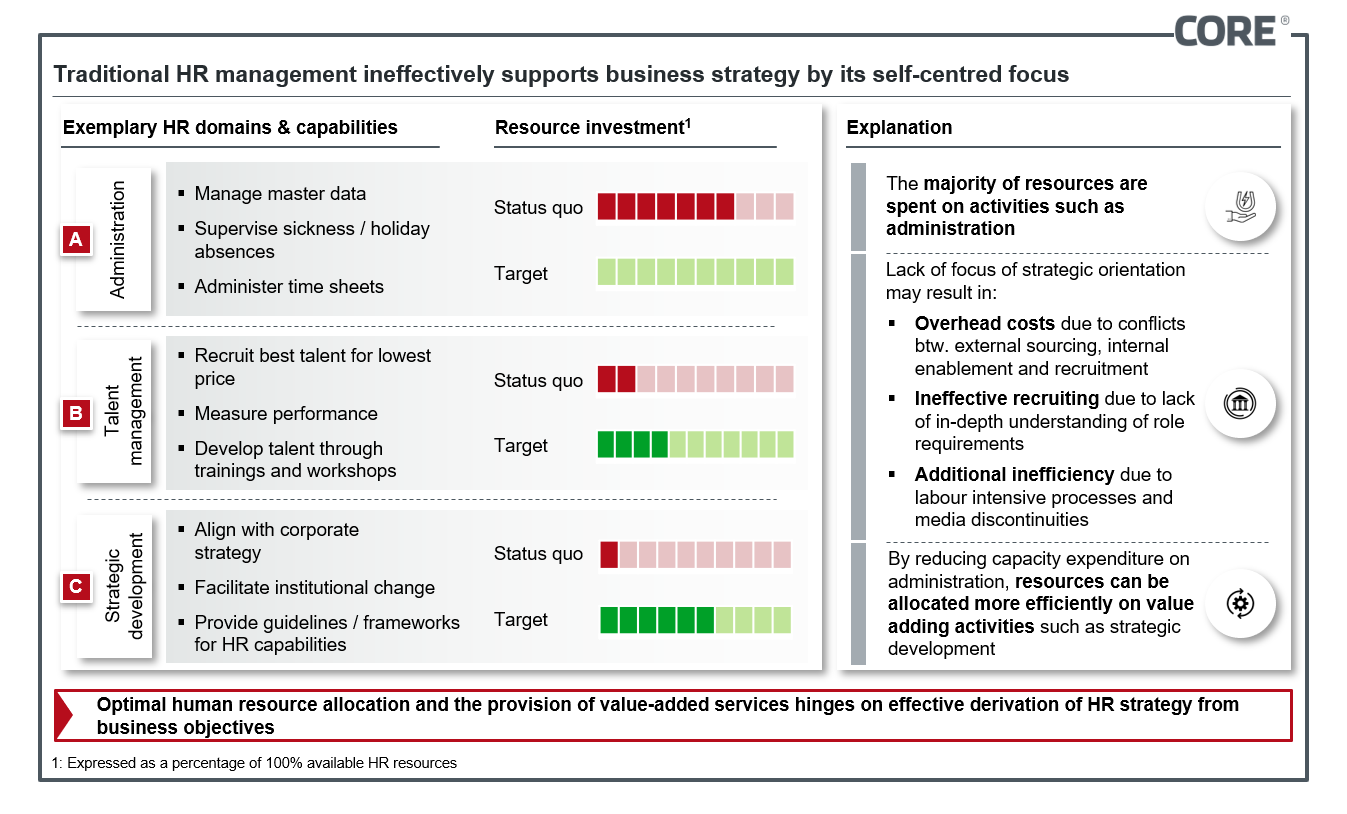Value maximisation in human resources through cloud BPO
Meet the authors
Expert - Dr. Philipp Kleine Jäger

Dr. Philipp Kleine Jäger ist Managing Partner bei CORE, der Unternehmens- und Technologieberatung von EPAM Er blickt auf über zwei Dekaden Erfahrung in strategischer Beratung und Industrie zurüc...
Mehr lesenDr. Philipp Kleine Jäger ist Managing Partner bei CORE, der Unternehmens- und Technologieberatung von EPAM Er blickt auf über zwei Dekaden Erfahrung in strategischer Beratung und Industrie zurück und stand Mandanten in aller Welt zur Seite – mit besonderem Augenmerk auf die Finanzdienstleistungsbranche. Im Zentrum seines Wirkens stehen tiefgreifende, technologiegetriebene Unternehmenstransformationen und Restrukturierungen mit Fokus auf Businessinnovation. Außerdem bekleidete Philipp Funktionen als Chief Technology Officer und Beirat mehrerer FinTech-Unternehmen, sowie als leitender Architekt eines internationalen Finanzinstituts.
Weniger lesen Figure 1: Ineffective HR Management
Figure 1: Ineffective HR Management Figure 2: Efficiency enhancements through BPO
Figure 2: Efficiency enhancements through BPO Figure 3: HR Cloud BPO project outline
Figure 3: HR Cloud BPO project outline

